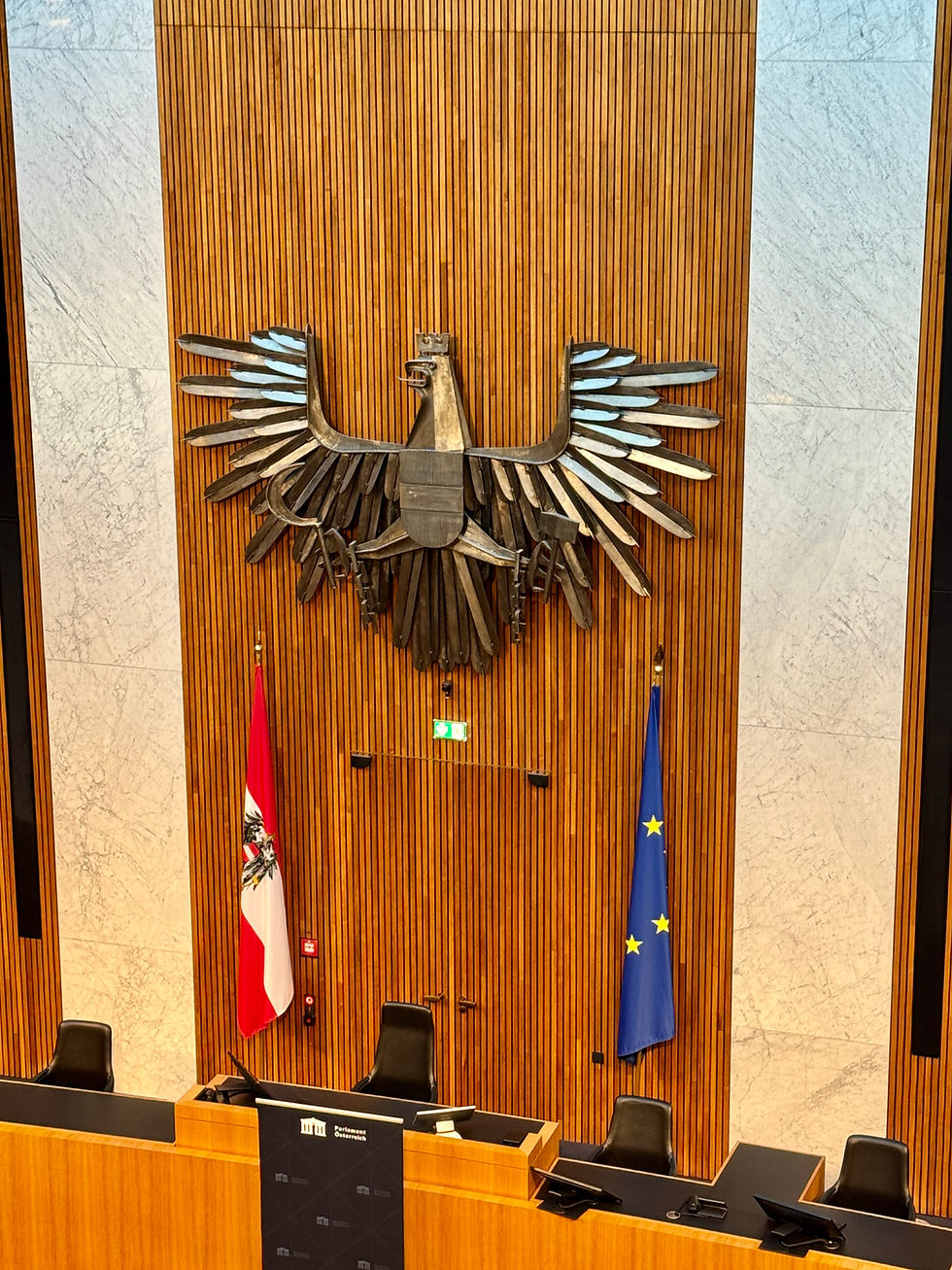Turkish Embassy - From Vineyards to Diplomacy
- Mika Vepsalainen
- 3 hours ago
- 3 min read
Join us to visit the elegant property at Prinz Eugen Straße 40 that has been home to the Embassy of the Republic of Turkey since 1916. Its fascinating story stretches back much further, through centuries of colourful characters.

Prinz Eugen Straße was once one of Vienna’s main thoroughfares, leading south toward the Heumarkt (Hay Market), bustling with horse-drawn hay wagons. The land where the embassy now stands began as vineyards and farmland and was cleared for urban development much later.
The first building here was commissioned by Martin Steinhauser, a coachman who expanded the property in 1812 possibly as a park estate with horse stables. In 1825, the land passed to Wilhelm August Gosmar, a merchant from Trieste, who built a sugar refinery on the site.
By 1893, the ownership had changed hands several times. Carlo Antonio Fontana bought the estate, then sold it to Pietro di Galvagni, an industrialist known for his contributions to Vienna’s development and art scene. Galvagni established Vienna’s first large steam furnace here, and later a bread factory that, however, was forced to close in 1848 following a workers’ uprising.
In 1869, Franz Freiherr von Wertheim acquired the property and soon transferred it to his father-in-law, Wilhelm Knepper, a merchant specializing in coloured and cigarette papers. In 1872, real estate agent and publisher Alexander Scharf purchased the site. His initial plans with architect Julius Dörfler were never realized. Instead, Scharf commissioned the renowned firm Fellner & Helmer to build the magnificent palace in the Italian Late Renaissance style that you see today. The palace’s first notable owner was Count Ernst Sylva Taroucca, a member of one of Portugal’s oldest noble families.
In 1916, Ambassador Hüseyin Hilmi and Counsellor Reşat Hikmet Beythe Ottoman purchased the building for the embassy. Actually, Ottoman–Austrian diplomatic relations date back to the 16th century. The first permanent Ottoman ambassador, İbrahim Afif Efendi, arrived in Vienna as early as in 1798. The last Ottoman ambassador, Hüseyin Hilmi, served from 1912 until his death in 1922 bridging the transition from empire to republic. With the Treaty of Friendship signed on 28 January 1924, the Republic of Turkey and the Republic of Austriaformally established diplomatic relations, and the embassy continued its mission at Prinz Eugen Straße 40.
You might wish to pay attention when you get in as you will see on the wall a painting where the current Austrian Republic is being established with the Allies and the Austrian Government signing the new Constitution in Palais Belvedere. Have a look at the carpet in the painting - you will see exactly the same carpet in the Ceremony Room of the embassy. The handmade silk carpet was a gift of the Government of Turkey to Austria. Eventually, Austria donated it back to Turkey as a sign of friendship but according the the embassy, it might well be that one day, Turkey will donate the carpet to the Austrians again!
The embassy’s story also bears witness to darker moments in recent history. In 1975, Armenian extremists stormed the embassy and tragically assassinated Ambassador Daniş Tunalıgıl. Later, on 20 June 1984, another attack occurred when a bomb exploded in an attaché’s car on nearby Theresianumgasse, injuring several people and causing widespread damage.
The building is not open to the public except on special occasions such as Vienna’s annual Open Embassies Day. While there’s no café or museum inside, its central location makes it easy to explore nearby attractions. Due to its historical structure, the building is not accessible for visitors with mobility needs.
Botschaft der Republik Türkiye
Prinz Eugen Straße 40, 1040 Wien








































Comments